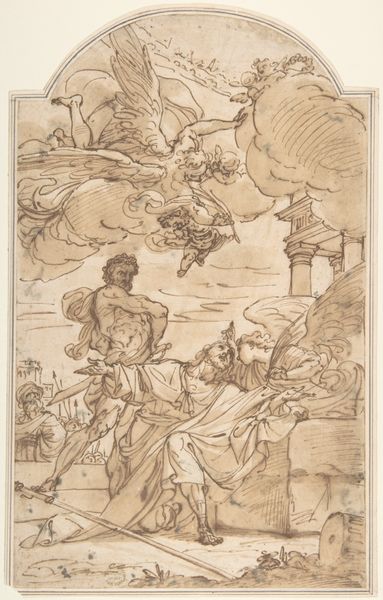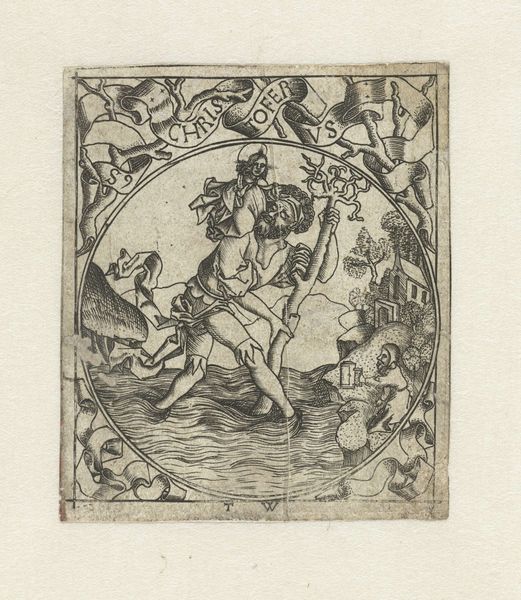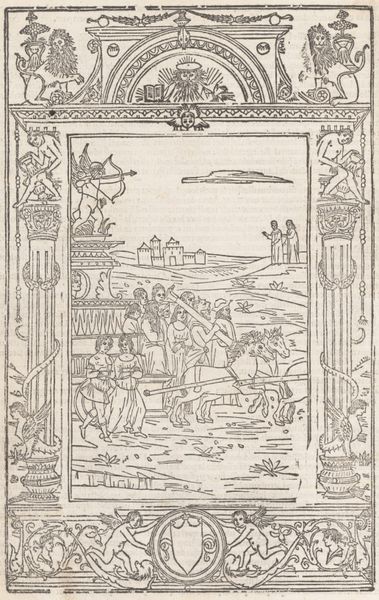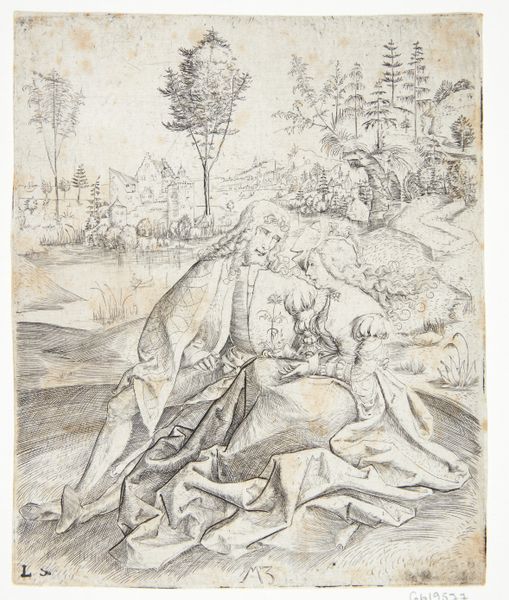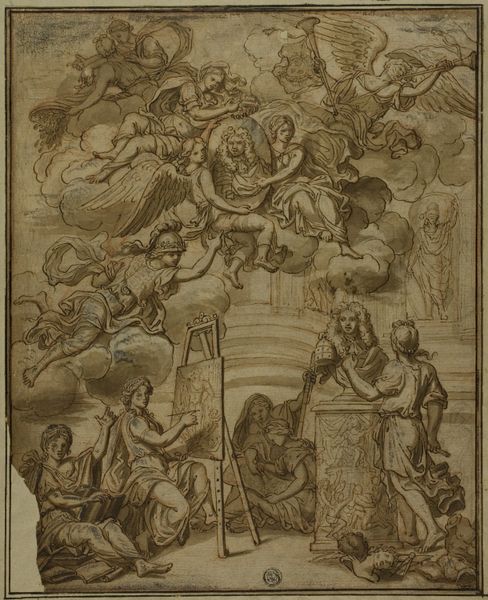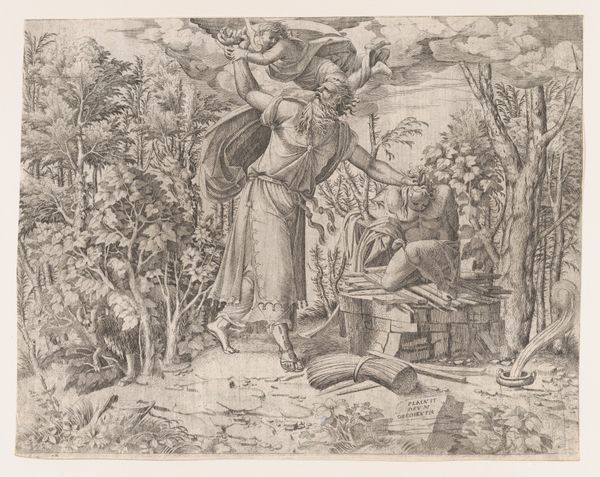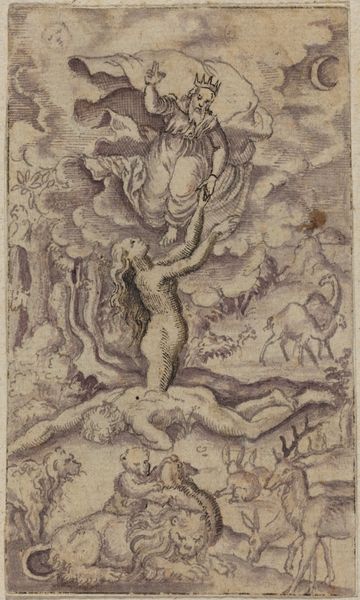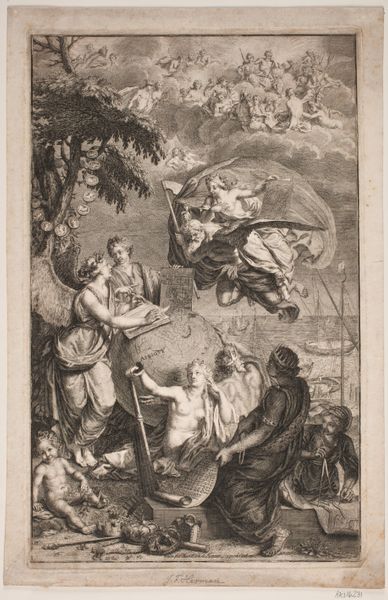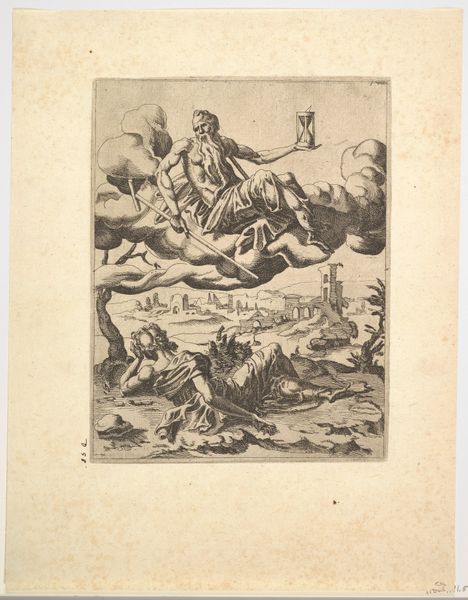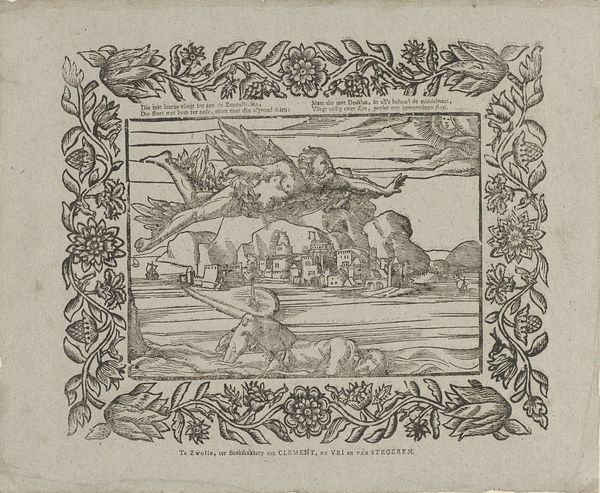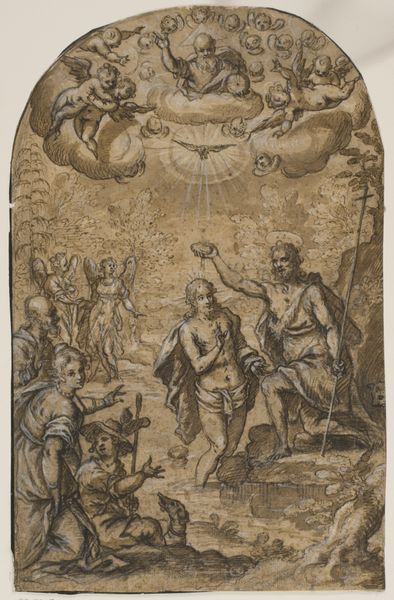
coloured-pencil, print, watercolor
#
coloured-pencil
#
narrative-art
# print
#
asian-art
#
landscape
#
figuration
#
watercolor
#
coloured pencil
Dimensions: Sheet: 15 5/8 × 11 3/4 in. (39.7 × 29.8 cm)
Copyright: Public Domain
Curator: This watercolor and coloured pencil work is titled "Goddess Matangi", attributed to Sasadhar Banarjee, and thought to have been made between 1865 and 1895. Editor: It has such a dreamy, almost ethereal quality. The blues and greens create a serene and mystical landscape. Curator: Indeed. And what interests me here is the combination of materials and its relationship to its context. The piece incorporates readily available materials of the time: watercolor and coloured pencils on paper, allowing for accessibility. The prints, distributed to a wider audience, potentially democratizing religious iconography, diverging from earlier artistic traditions tied to elite patronage. Editor: Yes, that is evident. But tell me, do you feel that distribution diminished its original significance? Wouldn't religious authority challenge these prints? The depicted figure is so arresting – regal, yet approachable – sitting on a wicker style chaise in nature holding both a kapala and kartika. This blending of accessibility and symbolic weight creates a fascinating dynamic. Curator: I agree it is fascinating! And I would propose that mass print production altered and potentially expanded artistic production in 19th-century Bengal. These works exist both as devotional objects and commodities within an emerging marketplace. The politics of imagery shifted with accessibility, creating spaces for renegotiating artistic value outside traditionally religious institutions. This could very well represent an appeal to more populist appeal with spiritual accessibility, while simultaneously challenging earlier strict forms. Editor: I hadn't thought about the shift toward secular spirituality in this way. By considering the print within that larger socio-economic context, it gains another layer of meaning. Curator: Exactly! Seeing the artistic practices through its means of creation reveals the social changes reflected in these images, not merely aesthetic appreciation. Editor: A fresh, grounded perspective, highlighting the dialogue between creation, culture, and meaning! Thanks for drawing out these threads today, helping our audience reframe its understanding of accessibility, production, and representation.
Comments
No comments
Be the first to comment and join the conversation on the ultimate creative platform.
